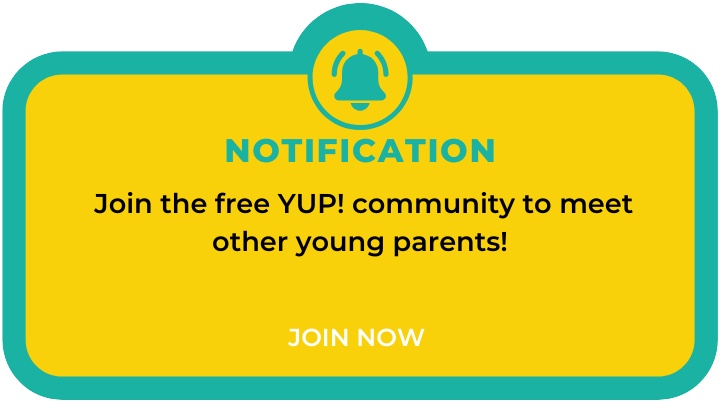The Basics: Postpartum Care

The first three months after childbirth, known as postpartum, is an important time for mothers to heal. This article offers an idea of what recovery might look like and suggestions of ways to heal as well as possible. During this time, ask for help taking care of your baby so you can dedicate time to your recovery.
What to Expect and How to Prepare
The first six to eight weeks after childbirth are considered a recovery period, but often healing can take longer. The childbirth recovery process is different for every woman. However, you can generally expect body aches, fatigue, vaginal bleeding, postpartum hemorrhoids, and soreness in areas with tears or stitches. Whether or not you will be breastfeeding, you can also expect swelling of the breasts (called engorgement) as breast milk begins to fill them. For a smoother recovery, get plenty of rest and have the following ready at home:
- Maxi pads (or adult diapers), as there will be a lot of bleeding
- Large, comfortable cotton underwear
- A peri or squirt bottle, to rinse off your genitals after using the bathroom
- Witch hazel pads and lidocaine spray, to ease pain from hemorrhoids
- Sitz bath, for general vaginal and perineal pain
- Ice and heat pads, for general aches and pains and breast engorgement
- Acetaminophen, for general body aches
- Nipple pads, for leaky nipples
- Nipple cream and lanolin, for treating cracked or sore nipples
Since healing can be different for women who have a c-section versus vaginal birth, make sure to ask your doctor or hospital staff for postpartum care instructions that are best for you. Also, be sure to schedule a follow-up appointment with your doctor, who will check your healing and recommend whether (or when) you can resume certain activities, such as vigorous exercise or sex.
Postpartum depression
Your mental wellbeing postpartum is equally important as your physical health. As your hormones fluctuate and you adjust to taking care of a baby, you might experience a rollercoaster of emotions that can make it difficult to cope and stay positive. Most parents experience “baby blues” (a temporary feeling of fatigue, worry, or unhappiness) the first few weeks after childbirth. However, mothers and fathers can go on to experience postpartum depression, or depression that occurs after having a baby. Postpartum depression can last months or even years after giving birth. Unlike baby blues, postpartum depression symptoms are more intense and can interfere with daily and social activities. It can also lead to thoughts of committing suicide or of harming the baby, which are serious symptoms that should be treated right away. Postpartum depression is completely normal and nothing to feel ashamed about. If you feel you might be developing postpartum depression, do not wait until your next appointment to say something. It is important to get treatment as soon as possible. Tell your doctor right away if you have had thoughts of harming yourself or your baby or if you have had these symptoms longer than two weeks postpartum:
- Crying more than you usually do
- Feeling angry, numb, or disconnected
- Spending less time with loved ones
- Feeling guilty or worried about being a bad mom
- Having doubts that you can take care of your baby
Stay Healthy Through Nutrition and Exercise
It is important to stay hydrated and eat well while healing and breastfeeding. Drink at least 8 glasses or water per day (64 ounces), and more if you will be breastfeeding. Eat balanced meals to get adequate nutrition and energy, including lots of high-fiber foods to avoid constipation (your doctor might prescribe stool softeners to help). Continue taking your prenatal vitamin pills to ensure you’re getting the vitamins and minerals you need. Exercise can also be important for boosting recovery and your mood. Slowly incorporate exercise into your routine when you feel ready or when your doctor approves. Women who had a c-section are not encouraged to exercise for at least a few weeks, and those who had vaginal births are encouraged to begin with light exercise (walking). Remember, the postpartum period is not the time to push yourself or to worry about losing pregnancy weight. Also, do what you can to exercise your pelvic muscles, which get stretched out during pregnancy and can lead to incontinence (trouble holding your pee). Kegel exercises, or squeezing your pelvic floor muscles throughout the day, can help. See the National Institutes of Health (NIH) resource below to learn more about how to do Kegel exercises.
When to Call Your Doctor
As you recover, be watchful of your body and symptoms. Contact your doctor as soon as possible if you experience any or a combination the following:
- Thoughts of harming yourself or your baby
- Fever of 101 Fahrenheit, or higher
- Pain that gets worse with time
- Swelling in your feet or hands
- Blurred vision
- Severe headaches
- Burning sensation or difficulty peeing
- Increased vaginal bleeding or bleeding through more than one pad per hour
- Large blood clots
- Bad-smelling vaginal discharge
- Stitches or scars that are tearing open, getting swollen, or bleeding
For a list of other symptoms to look out for during recovery, visit the resource below by the CDC.
Helpful Resources
Urgent Maternal Warning Signs (CDC): This website provides a detailed list of 15 symptoms that mothers should watch for up to a year postpartum. It also offers a link to personal (video) stories by women who experienced pregnancy-related complications. Kegel Exercises (NIH): This website offers detailed information on how to do Kegel exercises, as well as a sample form you can use to keep track of them every day. The information in this article is intended to be used for educational purposes only. It is not medical advice. Always consult a doctor or other healthcare professional when making decisions about your health.
